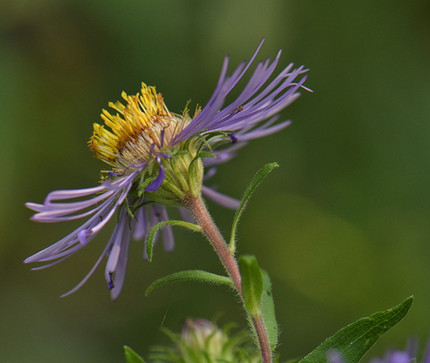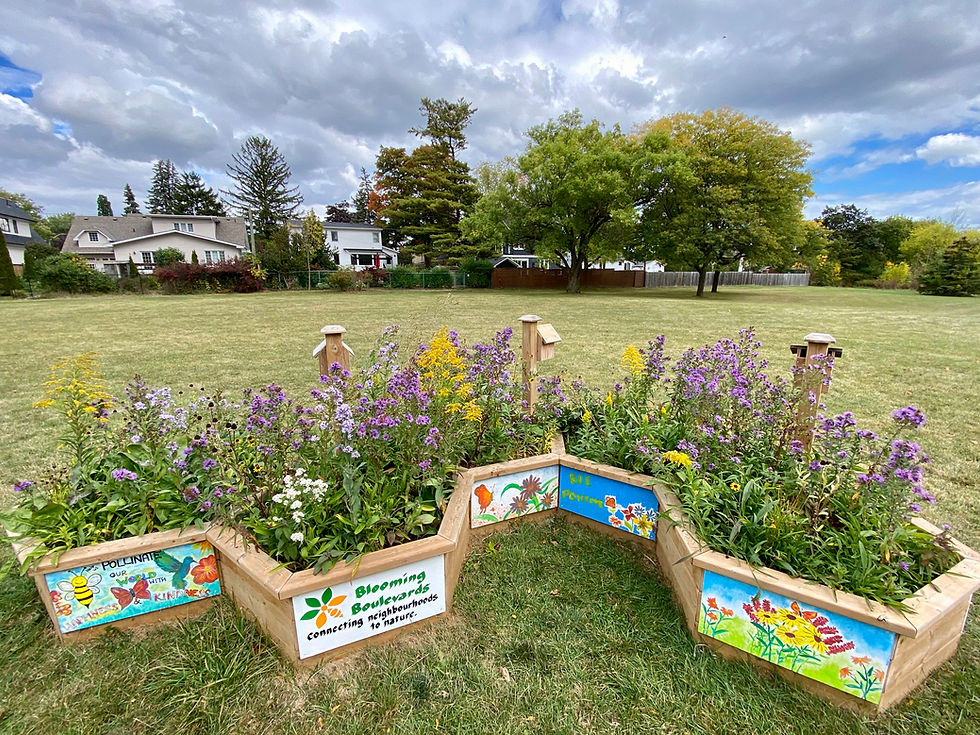Astonishing Asters
- pamelasleightholm
- Aug 22, 2021
- 2 min read
Updated: Aug 19, 2024
By Pamela Sleightholm
If identifying the dizzying numbers of native asters intimidates you, don’t be discouraged. Ongoing genetic research into the plants is showing that many asters-by-name may not be asters at all – confusion is warranted! There are different Latin names for Eurasian (Crinitaria, Galatella and Bellidiastrum) and North American (Symphotrichum and Eurybia) asters, muddled further by cross breeding between species.
From the top left: New England aster; New England aster with monarch butterfly; Bigleaf Woodland aster; Heath aster. All photos by Peeter Poldre, 2020.
The name “aster” is the Latin word for star. Their small flower heads, which are star-shaped and similar to a daisy, have been used to identify asters for decades.
Asters are a keystone species
But the asters’ importance as a late-season food source cannot be underestimated. Some continue to flower past the first frosts of fall, when all other blooms are long gone. Pollinators, including solitary native bees, rely on these blooms to store up energy before hibernation.
Asters are also host plants to many pollinating insects – meaning that they’re a food source for caterpillars of native butterfly and moth species – including Silvery Checkerspot and Northern Pearl Crescent.
Like many wildflower species, leaving their seed heads on the flowers over fall and winter provides an overwinter food source for birds and other animals.
Asters are a species worth getting to know and planting in your pollinator garden. Many are salt and drought-tolerant.
Native asters for southern Ontario gardens
Here are some asters native to the Lake Erie Lowlands region that we’ve chosen to include in Blooming Boulevards gardens:
Bigleaf Wood aster (Eurybia macrophylla) – thrives in moist soil in part shade (woodland environment). Spreads easily via rhizomes. Violet to pale blue flowers that bloom in August and September.
Heath aster (Symphyotrichumericoides) – loves dry, sandy, gravelly soils in full sun, thus perfect for an inhospitable boulevard garden. They bloom with bright white flowers from August to October.
New England aster (Symphyotrichum novae angliae) – lovely pale purple flowers on very tall stems (can be pinched back in early summer), which bloom into October. Thrives in moist soil in sun and part shade.
Sky blue aster (Symphyotrichum oolentangiense) – Prefers medium, well-drained soil in full sun, and can tolerate part shade, drought, and sandy or clay soils. It is 2-3 feet (60-90cm) high, blooms August to October
Smooth aster (Symphyotrichum laevis) – a medium-tall plant with fragrant flowers which bloom from August to October. Thrives in part shade to full sun.
Upland white goldenrod aka upland white aster (Oligoneuron album) – This species was recently reclassified as a goldenrod since it has been known to hybridize with goldenrod species. It looks like an aster, however, so when we design gardens we use it as such. It blooms in late summer, is drought-tolerant and likes full sun and well-drained soil. Because of its low height (60 - 90 cm) it works well in front of taller Aug/Sept bloomers that tend to be bare at their base.
References:

















Comments